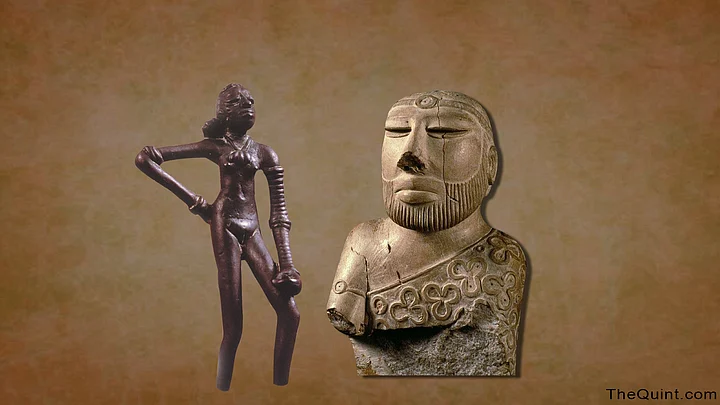The internet is in the midst of debating whether a new study on the Harappan civilisation “dents the Aryan migration theory”.
A study of DNA from skeletal remains excavated from the Harappan cemetery at Rakhigarhi in modern-day Haryana, has thrown fresh light on the Indus Valley Civilisation. Following the publication of the study, several news reports claimed that it “junked the Aryan invasion/Aryan migration theory”. But experts are now pointing out that claiming so is a gross misreading of the study itself.
What The Study Says
The study is titled ‘An Ancient Harappan Genome lacks DNA from Steppe Pastoralists or Iranian farmers’, and confirms earlier findings that the hunter-gatherers of South Asia, who then became a settled people, have ancestry from India’s first people (ie: the Out-of-Africa migration), and west Asians, but no sign of steppe (central Asian) ancestry, ie: not Aryan. It counters some previous theories that all South Asians have Aryan ancestry.
Published in the journal Cell, the study was conducted by a team of archaeologists led by Vasant Shinde, former Vice Chancellor of Pune’s Deccan College.
The researchers performed DNA analysis on 61 skeletal samples found within one kilometre of the Rakhigarhi cemetery, a Harappan site.
Key Findings
According to a report published in The Hindu, the findings of the study are as follows:
- It counters the theory that Harappans have Steppe pastoral or Iranian farmer ancestry – the new study shows that Harappans did have ancient Iranian ancestry, but from before the Iranians mixed with Anatolians and became farmers.
- The researchers argue that their study negates the hypothesis that mass migration happened during Harappan times from outside South Asia.
- Farming in South Asia was not due to the movement of people from the farming cultures of west Asia, but was instead independently arrived at by local hunter-gatherers. The same hunter-gatherer communities developed into agricultural communities and formed the Harappan Civilisation.
- That Indo-European languages were spread in the country by steppe pastoralists migrating out of central Asia to Europe and into India.
Also, according to a report in The Indian Express, the study states that:
- The Harappan people’s presence is evident at sites like Gonur in Turkmenistan and Sahr-i-Sokhta in Iran, indicating that there was a movement of people from east to west.
Twitter Debates Study Findings
As you would expect, the latest study was hotly debated and discussed on Twitter.
Tony Joseph, who authored the book ‘Early Indians: The Story of Our Ancestors and Where We Came From’, countered news articles claiming that the study had “junked the Aryan invasion theory”.
Joseph wrote on Twitter, “The 'Aryan' migration theory says that this migration happened AFTER the Indus Civilization and, therefore, there will be NO Steppe-related genetic presence in sites like Rakhigarhi – which is exactly what is.”
Author and mythologist Devdutt Pattanaik also countered those claiming that the study had “dented the Aryan invasion theory”.
And so did Fatima Khan, who wrote an article on The Print regarding the study.
(For further context, watch this video from The Quint’s archives, in which Tony Joseph clarifies some commonly held misconceptions regarding Aryan migration.)
(With inputs from The Hindu and The Indian Express)
